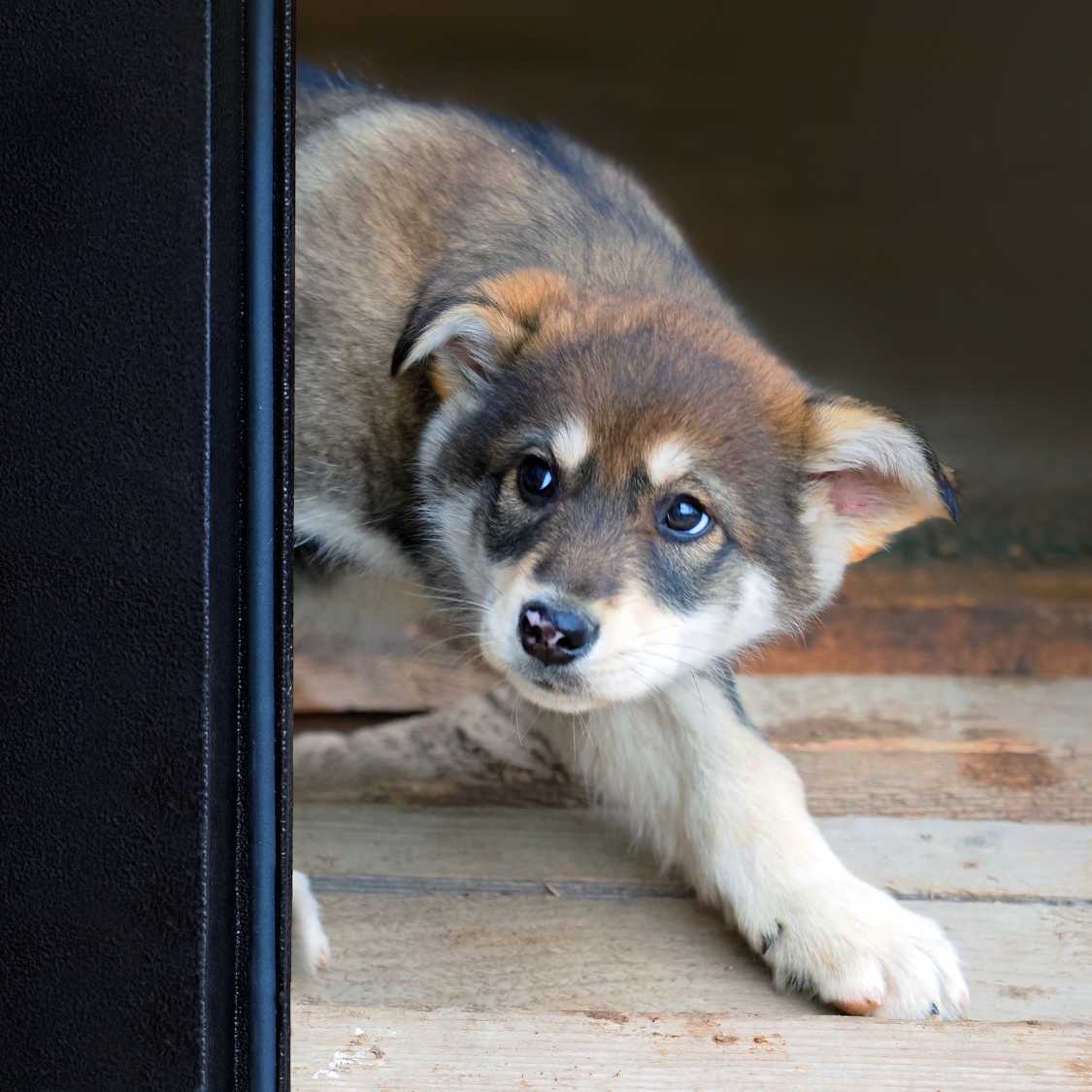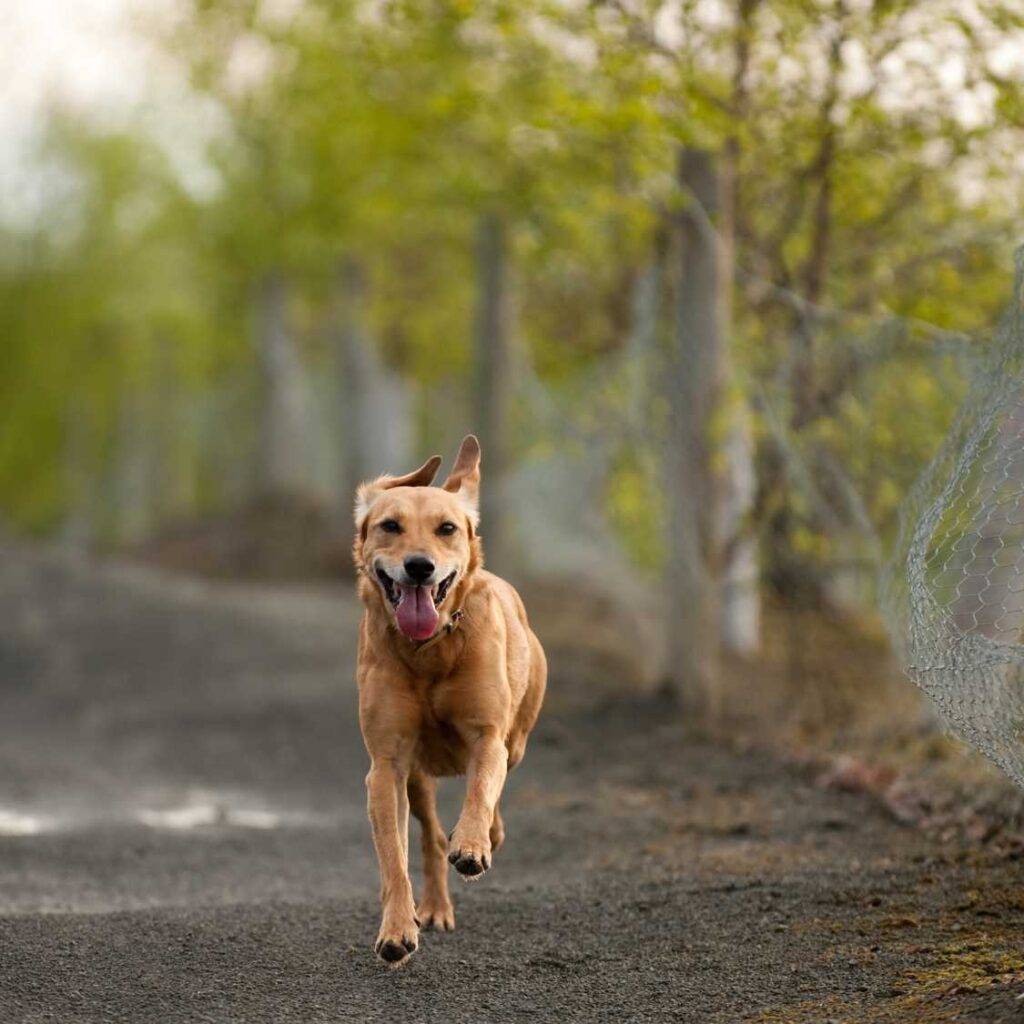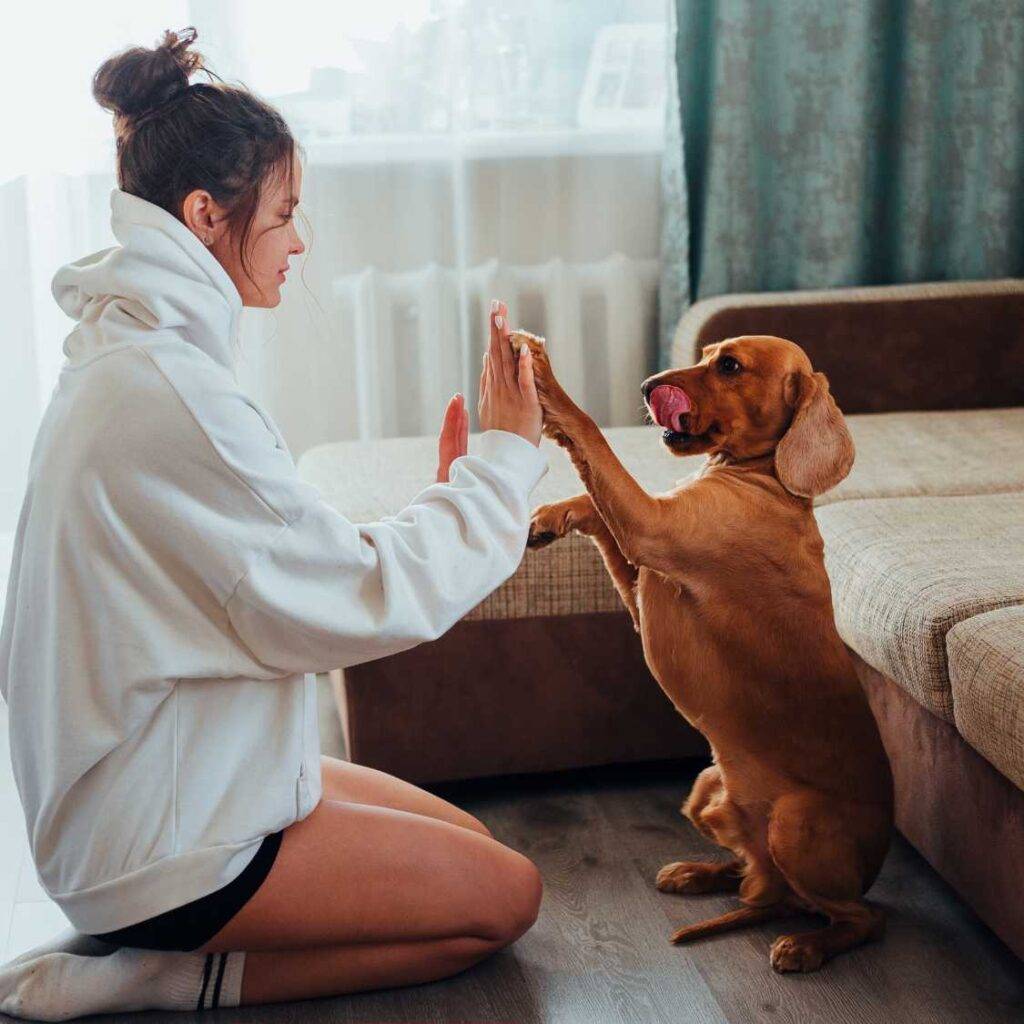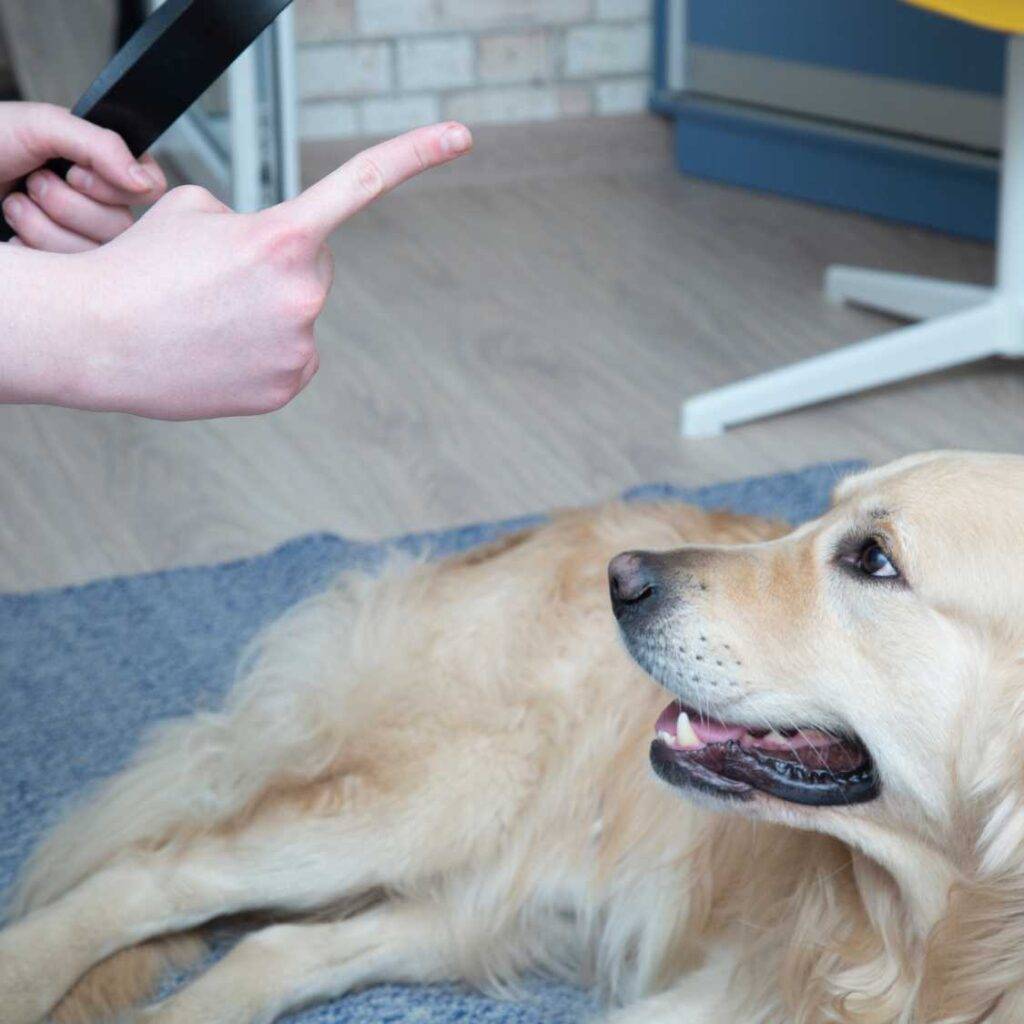How to Stop Your Dog from Running Away from Home?

Imagine returning home from a long day, only to find your beloved dog missing. The sheer panic and worry that ensue are feelings no pet owner wants to experience. Have you ever wondered what it takes to keep your furry friend safely at home?
Preventing dogs from running away is crucial for both their safety and the peace of mind of their owners. Dogs that escape can face numerous dangers, from traffic accidents to encounters with aggressive animals. Moreover, the emotional toll on owners, who are left frantically searching and worrying about their pet’s wellbeing, can be immense. Ensuring your dog stays safely at home isn’t just about preventing inconvenience; it’s about safeguarding a family member.
In this blog, we’ll explore the key reasons dogs run away and provide practical tips to prevent it. We’ll delve into effective training techniques, the importance of a secure environment, and the role of modern technology in keeping your dog safe. By the end, you’ll have a comprehensive understanding of creating a safe and happy environment for your canine companion.
Understanding Why Dogs Run Away

Common Reasons
- Boredom: Dogs are intelligent and energetic animals that need mental and physical stimulation. When they’re left alone for long periods without engaging in activities or exercise, they can become bored and restless. This restlessness often leads them to seek adventure and stimulation outside the confines of their home.
- Hunting Instincts: Many dog breeds have strong hunting instincts. A passing squirrel, bird, or even the scent of another animal can trigger these instincts, compelling the dog to chase after the perceived prey.
- Fear: Loud noises, such as thunderstorms or fireworks, can scare dogs, prompting them to flee in an attempt to escape the frightening situation. Even unfamiliar people or animals can induce fear and cause a dog to run away.
- Mating Behavior: Unneutered or unspayed dogs are driven by natural mating urges. Male dogs may wander off in search of a female in heat, while females in heat might roam to find a mate. This biological drive can overpower their usual loyalty to home.
Identifying the Cause
To effectively prevent your dog from running away, it’s essential to understand the specific motivations behind their behavior. Here are some tips to help you identify the cause:
- Observation: Pay close attention to your dog’s behavior and patterns. Note when they seem most restless or agitated. Are there specific times of day or external stimuli, like noises or wildlife, that trigger their urge to escape?
- Behavioral Cues: Look for signs of boredom or anxiety, such as excessive chewing, digging, or pacing. If your dog tends to run away after being left alone for long periods, boredom might be the cause.
- Environmental Triggers: Consider environmental factors that might be prompting your dog to run away. Are there other animals nearby that might trigger their hunting instincts? Do loud noises frequently occur in your area?
- Health and Wellness: Sometimes, underlying health issues can contribute to a dog’s desire to run away. Ensure your dog is in good health and consult a veterinarian if you notice any unusual behavior.
- Consult a Professional: If you’re unsure about the cause of your dog’s behavior, seeking advice from a professional dog trainer or behaviorist can provide valuable insights and tailored solutions.
By understanding why your dog runs away, you can take the necessary steps to address the root cause and create a safer, more secure environment for your furry friend.
Creating a Safe Environment

Secure Your Yard
- Check Fencing: Regularly inspect your fencing for any gaps, holes, or weak spots that your dog could exploit to escape. Ensure the fence is tall enough to prevent your dog from jumping over it—most fences should be at least six feet high for larger breeds.
- Reinforce the Base: Many dogs are adept diggers. To prevent tunneling under the fence, bury chicken wire or hardware cloth along the base. Some owners also install a concrete or gravel barrier to deter digging.
- Gate Security: Ensure all gates latch securely and consider adding a lock for extra security. Self-closing hinges can be a great addition to prevent gates from accidentally being left open.
- Top Additions: For dogs that are particularly adept at climbing or jumping, consider adding an inward-leaning extension to the top of your fence. This addition can make it much harder for them to scale the fence.
Dog-Proofing Your Home
- Remove Temptations: Identify and eliminate any temptations that might entice your dog to escape. This includes storing food securely, keeping garbage cans locked, and removing any objects near the fence that your dog could use to climb over.
- Safe Spaces: Create designated safe areas within your home where your dog feels comfortable and secure. Use cozy beds, crates, or designated rooms to provide a sense of security.
- Windows and Doors: Ensure all windows and doors are securely closed when you’re not at home. Installing screens or barriers on windows can prevent your dog from escaping if they get opened.
- Hazard Removal: Keep hazardous items, such as chemicals, electrical cords, and small objects that can be swallowed, out of reach. A safe environment is less likely to cause anxiety or behavior issues that lead to running away.
Using Barriers and Gates
- Indoor Barriers: Use baby gates or dog gates to restrict access to certain areas of your home. This is particularly useful for keeping dogs out of rooms with open windows or doors, or areas that may have potential hazards.
- Outdoor Barriers: In addition to fencing, consider using barriers within your yard to create a more secure environment. For instance, a dog run or a secondary fence around the garden can provide additional layers of security.
- Exercise Pens: For puppies or small breeds, exercise pens can provide a safe and confined space for them to play without the risk of escape. These are portable and can be used both indoors and outdoors.
- Electronic Barriers: While not suitable for all dogs, invisible fences or electronic barriers can be an additional measure for keeping your dog within the boundaries of your property. These systems should be used with caution and proper training.
Creating a safe environment for your dog involves a combination of physical barriers, behavioral adjustments, and ongoing vigilance. By ensuring your yard and home are secure, removing potential temptations and hazards, and using appropriate barriers, you can significantly reduce the risk of your dog running away.
Training Techniques

Recall Training
Teaching your dog to reliably come when called is one of the most important commands for their safety. Here’s a step-by-step guide to recall training:
- Start Indoors: Begin in a quiet, indoor environment free from distractions. Hold a treat and call your dog’s name followed by the command “come.”
- Use Positive Reinforcement: When your dog comes to you, immediately reward them with a treat and lots of praise. Make the experience positive and exciting.
- Increase Distance Gradually: As your dog gets better, gradually increase the distance between you and your dog before giving the command. Continue to reward promptly.
- Practice Outdoors: Move to a secure outdoor space and repeat the training. Start with short distances and low distractions, gradually increasing both as your dog improves.
- Consistency: Practice daily to reinforce the behavior. Use a consistent command and tone to avoid confusing your dog.
- Add Distractions: Once your dog has mastered recall in a controlled environment, practice in areas with more distractions, such as parks. Always use high-value treats to maintain their focus.
Positive Reinforcement
Using positive reinforcement helps encourage good behavior and strengthens the bond between you and your dog.
- Treats: Use small, tasty treats that your dog loves. Reward them immediately after they exhibit the desired behavior to create a clear association.
- Praise: Verbal praise, such as saying “Good dog!” in a happy tone, is an effective way to show your dog they’ve done something right. Combine it with petting or a gentle scratch behind the ears.
- Toys: Some dogs are more motivated by toys than treats. Use a favorite toy as a reward for good behavior, incorporating playtime as a positive reinforcement.
- Consistency: Be consistent with your rewards. Always acknowledge and reward good behavior to reinforce learning.
Leash Training
Proper leash training ensures that walks are enjoyable and safe for both you and your dog.
- Choose the Right Equipment: Use a comfortable collar or harness and a standard leash. Avoid retractable leashes for training purposes.
- Introduce the Leash: Let your dog get used to wearing the leash indoors before taking them outside. Attach the leash to their collar and allow them to drag it around to get comfortable.
- Start Indoors: Practice walking your dog on a leash indoors. Use treats to encourage them to stay by your side and reward them for following your lead.
- Short Sessions: Keep initial training sessions short to avoid overwhelming your dog. Gradually increase the length of your walks as they get more comfortable.
- Use Commands: Teach your dog commands like “heel” or “let’s go” to keep them walking beside you. Reward them for staying close and not pulling on the leash.
- Practice Patience: If your dog pulls, stop walking and wait for them to return to your side. Reward them when they do. This teaches them that pulling won’t get them where they want to go.
Boundary Training
Teaching your dog the limits of your property helps prevent them from wandering off.
- Leash Introduction: Start by walking your dog on a leash around the perimeter of your yard. Use a command like “boundary” to signal the limits.
- Visual Cues: Use visual markers, such as flags or garden borders, to help your dog understand the boundaries. Walk along these markers during training.
- Reward Compliance: When your dog stays within the boundaries, reward them with treats and praise. If they try to cross, gently guide them back and reinforce the command.
- Off-Leash Training: Once your dog understands the boundaries of a leash, practice off-leash in a secure yard. Use the same command and rewards to reinforce the behavior.
- Consistency: Regularly practice boundary training to keep the behavior fresh. Reinforce the limits whenever your dog is in the yard.
- Supervision: Always supervise your dog when they are outside, especially during the early stages of boundary training.
By employing these training techniques, you can effectively teach your dog to respond to commands, stay within safe boundaries, and enjoy walks without pulling on the leash. Consistent practice and positive reinforcement are key to successful training.
Preventative Measures

Regular Exercise
Ensuring your dog gets ample physical and mental stimulation is crucial for preventing boredom, which can lead to escape attempts.
- Daily Walks: Provide your dog with regular walks tailored to their energy level and breed. Most dogs benefit from at least 30 minutes to an hour of exercise daily.
- Playtime: Engage your dog in play sessions with toys like balls, frisbees, or tug ropes. Interactive play helps burn energy and strengthens your bond.
- Mental Stimulation: Incorporate activities that challenge your dog’s mind. Puzzle toys, training sessions, and teaching new tricks can keep them mentally engaged and reduce boredom.
- Variety: Mix up the routine to keep things interesting. Explore new walking routes, introduce different toys, and vary play activities to keep your dog stimulated.
Safe Socialization
Controlled interactions with other dogs and people can help reduce your dog’s urge to run away by satisfying their social needs.
- Socialization Classes: Enroll your dog in socialization or obedience classes where they can interact with other dogs in a controlled environment.
- Playdates: Arrange playdates with dogs of similar temperament and energy levels. Supervised play helps your dog learn proper social behavior and expend energy.
- Dog Parks: Visit dog parks where your dog can run and play off-leash in a safe, enclosed area. Ensure the park is secure and monitor interactions closely.
- Meeting New People: Introduce your dog to a variety of people, including children, adults, and strangers, in a controlled manner to build their confidence and reduce fear-based running away.
Routine and Consistency
Establishing a reliable routine helps your dog feel secure and reduces anxiety that might lead to escape behavior.
- Feeding Schedule: Maintain consistent feeding times. Dogs thrive on routine, and regular mealtimes help establish a sense of predictability.
- Exercise Routine: Stick to a consistent schedule for walks and playtime. Predictable exercise times help manage your dog’s energy levels and reduce restlessness.
- Training Sessions: Regular training sessions reinforce good behavior and provide mental stimulation. Consistent commands and rewards help your dog understand expectations.
- Bedtime Routine: Create a calming bedtime routine to help your dog wind down. A consistent sleep schedule can reduce nighttime anxiety and prevent escape attempts.
Technology Solutions

GPS Collars and Trackers
Using technology can provide peace of mind and a quick way to locate your dog if they do run away.
- Benefits: GPS collars and trackers allow you to monitor your dog’s location in real time. This technology can quickly alert you if your dog leaves a designated area.
- Recommendations: Choose a GPS collar or tracker with reliable coverage, long battery life, and waterproof features. Popular options include Whistle, Tractive, and Garmin GPS collars.
- Features: Look for devices with features like geofencing (setting safe zones), activity monitoring, and historical tracking to get a comprehensive view of your dog’s movements.
Secure ID Tags
Proper identification is essential for quickly reuniting with your dog if they get lost.
- ID Tags: Ensure your dog always wears a collar with an up-to-date ID tag. The tag should include your phone number and any other relevant contact information.
- Microchipping: Microchip your dog as a permanent form of identification. Ensure your contact information is registered and kept current with the microchip company.
- Collar Information: Besides the ID tag, consider adding a secondary tag with essential information, such as medical needs or a secondary contact number.
- Durability: Choose ID tags and collars made of durable materials that can withstand wear and tear, ensuring they stay readable and secure over time.
By incorporating these preventative measures, you can significantly reduce the risk of your dog running away. Regular exercise, safe socialization, and consistent routines keep your dog happy and content, while technology solutions provide an added layer of security.
Common Mistakes to Avoid

Punishment
Using punishment as a means to correct your dog’s behavior is not only ineffective but can also be harmful.
- Ineffectiveness: Punishment often fails to address the root cause of the behavior. Dogs may not understand why they are being punished, especially if the punishment occurs after the unwanted behavior.
- Fear and Anxiety: Punishing your dog can create fear and anxiety, damaging the trust and bond between you and your pet. A fearful dog is more likely to develop additional behavior problems and may even become aggressive.
- Negative Associations: Dogs may associate the punishment with their owner or their surroundings rather than with their behavior, leading to confusion and mistrust. This can result in a dog that is fearful of its owner or certain environments.
- Better Alternatives: Instead of punishment, focus on positive reinforcement. Reward your dog for good behavior with treats, praise, and play. Redirect unwanted behaviors by providing acceptable alternatives, such as chew toys for a dog that likes to chew on furniture.
Inconsistent Training
Consistency is key to effective training. Inconsistent commands and routines can confuse your dog and hinder their learning process.
- Mixed Signals: If different family members use different commands or allow different behaviors, the dog receives mixed signals about what is expected. This inconsistency makes it difficult for the dog to learn and follow rules.
- Delayed Learning: Inconsistent training slows down the learning process. Dogs need clear, repeated cues to understand and remember commands. Changing the rules or expectations can set back their progress.
- Behavior Regression: Inconsistency can lead to regression in previously learned behaviors. A once well-behaved dog may start exhibiting unwanted behaviors again if the training is not reinforced consistently.
- Establish Clear Rules: Make sure everyone in the household uses the same commands and follows the same rules for the dog. Regularly reinforce training with short, daily sessions to maintain and strengthen learned behaviors.
- Routine Reinforcement: Consistently reward good behavior and address unwanted behavior promptly and appropriately. Use the same methods and commands each time to create a predictable environment for your dog.
By avoiding punishment and maintaining consistent training, you can foster a positive and effective learning environment for your dog. This approach not only helps your dog understand and follow commands but also strengthens the bond between you and your furry friend.
Conclusion
Remember, training your dog and ensuring their safety is a journey that requires patience, dedication, and consistency. Stay committed to regular exercise, positive reinforcement, and consistent routines. By understanding your dog’s needs and motivations, creating a secure environment, and using effective training techniques, you can significantly reduce the risk of your dog running away.
Every small step you take contributes to a happier, safer life for your furry friend. Keep up the good work, stay patient, and enjoy the rewarding experience of raising a well-behaved and content dog.











































